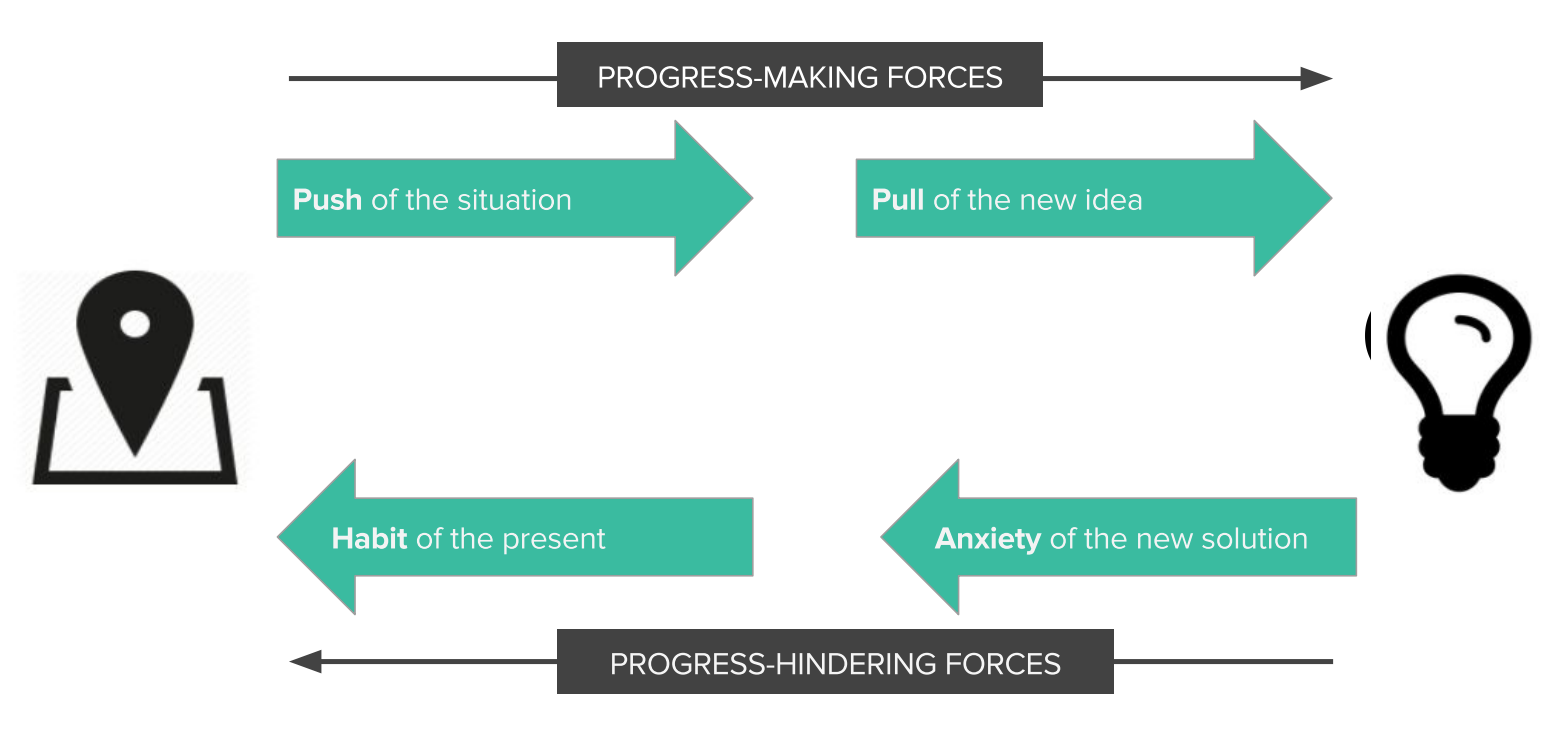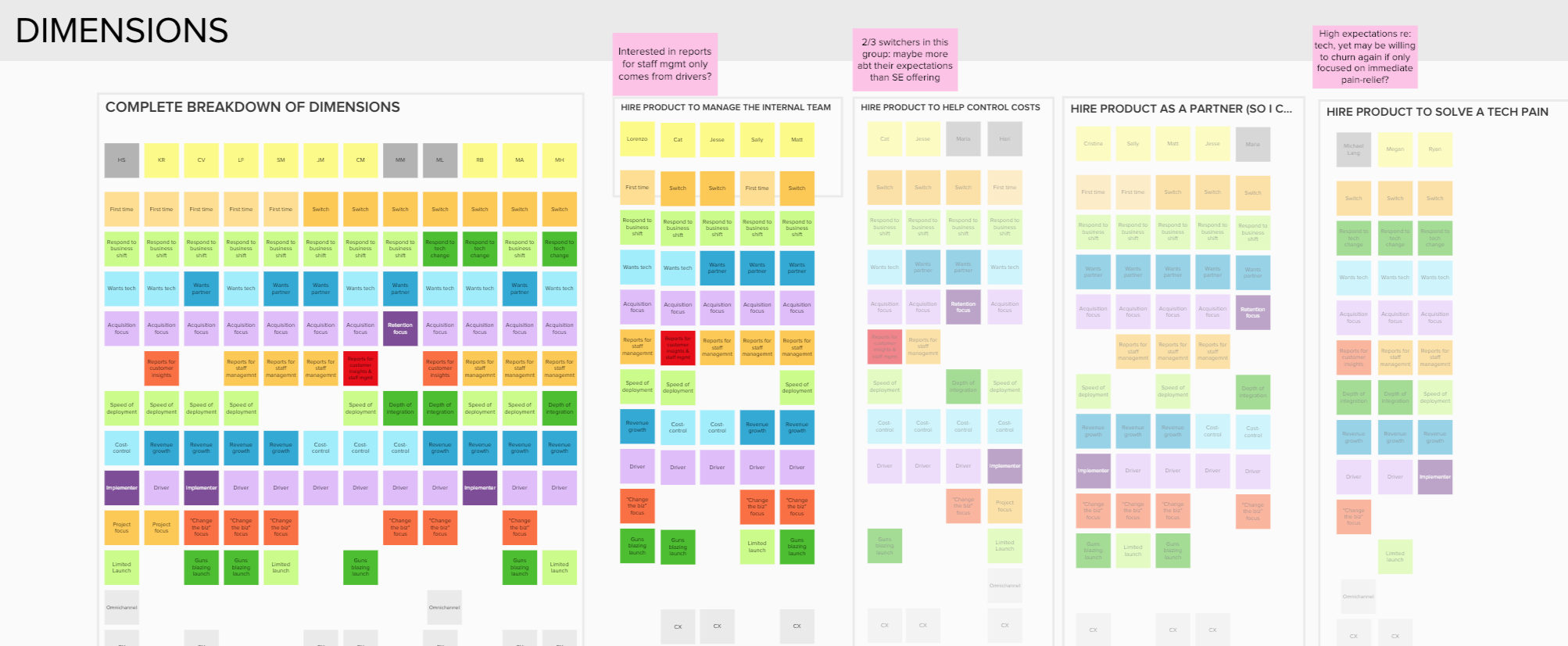My Role
My client hired me to help them better understand their market position and opportunity through two phases: a qualitative Jobs to be Done research product, followed by a competitive scan and the development of a strategy canvas.
This case study will not dive into the competitive scan and strategy canvas.
Approach
Jobs to be Done Research
In November 2017, a fellow researcher and I conducted 12 Jobs to be Done "Switch"-style interviews. Focusing on people who had been actively involved in the purchasing decision within the past 18 months, we spoke with:
- 1 unconverted prospect
- 3 churned customers (one churned for seasonality and plans to return to client)
- 8 current customers
These interviewees were asked about the circumstances leading up to their decision to switch products, and how their new solution helps them with their work activities in a way the former solution could not.
Considering the impact of the interviewees comments as a series of "forces" acting upon them, we were able to identify factors that could be manipulated to promote our desired behavior with other customers.


Specifically, the 'push' forces identified could be used by the marketing and sales teams to proactively identify prospects.
After the interviews were complete, we performed a synthesis where we identified different clusters of needs among our respondents. This enabled us to identify two major segments of users with distinct needs and challenges. One of our recommendations was thus to position the product differently for these two markets; focusing on their particular needs, concerns and measures of success.

Although any good Jobs to be Done practitioner will speak loudly against using job titles for market segmentation 😉, we did observe that motivations and success measures WERE correlated with the job titles of the people we spoke with. Those who were responsible for marketing, sales and revenue generation had different goals than those who were in customer support roles, who were focused moreso on cost-savings. These served as simple segments to focus on: sales vs support.
Highlights
{Client} has a robust technology suite that helps it stand in certain verticals
Customers want more than a technical product, they are looking for a partnership and support
As companies grow, {Client} will have to grow with them, or risk losing them.
The product should be marketed separately for sales and support, as they have different price sensitivities, measures of success and feature needs.
“It came down to two in the end: {Client} and then the second one. The HIPAA compliance was the determining factor in the end. I don't think that price was even a factor. As soon as we saw that the second platform wasn't HIPAA compliant we didn't even really move forward with evaluating the other parts”
- Director of Account Management
Outcomes
As the consulting engagement only covered research and recommendations, it's difficult to know the true impact of my work on the company's bottom line. That being said, I received immediate assurance that our project summary video would be used to onboard new employees to better understand the company's product and customers. In addition, the company has adopted many of the recommendations in how it markets and positions its product.